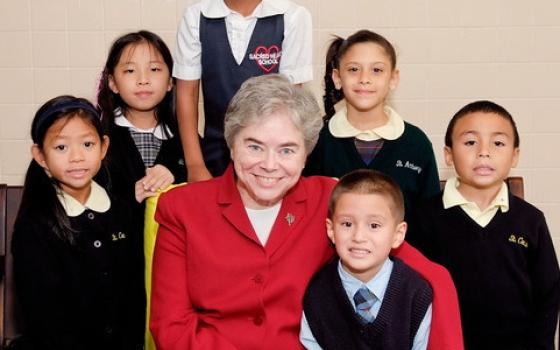New wine in the wineskins: A conversation on replicating the Catholic Partnership Schools model
As passionately as she believes that education is the most reliable means of escaping the dire effects of poverty, Karen Dietrich says that the challenge of urban education goes well beyond achieving good test scores.
There’s no such thing as intervening too early in a child’s life, she says, stressing the importance of a stable home environment and exposure to enriching early experiences. “The impact that their lives have on their learning is critical” Dietrich said.
A Sister of St. Joseph and executive director of Camden, New Jersey’s Catholic Partnership Schools, Dietrich often shows visitors around the five partnership schools – some drawn from afar by the possibility of creating successful relationships among educational institutions in their own backyard.
In conversation, she shared some suggestions for educators in other areas who might be considering forging new partnerships among their own local schools.
When you started to work in Camden, did you think you were developing a model that could work for other school systems?
That was a minor part of the initial conversation. [We thought] let’s do this as well as we possibly can, then we can figure out if we have something to share and answers for other Catholic urban schools. We had to get ourselves together.
Creativity comes from making something new again – that’s always exciting for me. The old can become new again, and meet the needs and challenges of the current situation. Catholic schools are very much in that position. Our legacy has been rich; it’s like the [Gospel parable] of the new wine in old wineskins. We have this phenomenal tradition. Yet the challenges in a multitude of ways today are new. It’s exciting for me personally to be part of that, to dream of a new culture, not to be pulled down by the 'oh my, what are we going to do if we lose enrollment.' I want to be energized, and creatively find a new way.”
What about your model is can be replicated elsewhere?
The infrastructure of the management model is incredibly portable – including how we share some personnel [across five schools], focusing on education first, centralizing financing and development, shared curriculum and assessment. [With regard to assessment], the biggest element is the NWEA (Northwest Evaluation Assessment) materials, particularly the MAP (Measures of Academic Progress) tests. They are nationally normed assessment tools, based on data gathered from a bazillion kids across the country. The tests measure academic progress, are taken online, and are adaptive, adjusting to the children’s responses – that’s something a paper and pencil test cannot do.
It gives immediate feedback to the teacher and the students in terms of where they are with regard to a skill set continuum and allows the teacher to differentiate their instruction based on the needs of the child. We still spend time on professional development with teachers, doing most of it in the classroom with coaching. We have our own instructional coach partnership team member who spends a whole day a week in each school working with teachers. This is distinct from supervision and evaluation, really meant to help the teacher hone their craft. We also have enrichment programs like athletic teams, arts and music programs, aviation and robotics, open to children in all schools. We want to enrichment and opportunity, curriculum and services are [equally] available to children in all five schools.
What are keys to your success might help others?
You have to be really sure of your mission and vision when you begin. You need to be incredibly mindful of having a really good product to market. That’s one of the reasons we started with assessments, to be sure we’d know what our indicators of success would be. We keep an eye on accountability and [financial] transparency. Funders want both of these. It was very important to us that after our first year of operation we had a formal audit and posted a 990 [IRS financial statement]. Funders can find us on Guidestar. We have a director of development who is experienced at major-gift fundraising, and we use a professional software package to track our donors. It was important to us from day one that we projected the image that everything we do is thoughtful and deliberate and that we don’t take our eye off the mission.
In our office in the center of Camden, it’s key that if we bring a donor, a journalist or a parish member that we don’t look like we’re lavish, but that there is attention to detail.
Detail is important because it says to our children 'you matter, you’re important enough, and I’m going to be as attentive to you and care as much about you as I care about this building.'
It’s imperative for those folks who have directly or indirectly benefited from Catholic education to band together to support Catholic schools. We have to be the ones responding to the great needs of the time, building on this wonderful tradition and legacy – but in a new and exciting way.
[Elizabeth Eisenstadt Evans is a religion columnist for Lancaster Newspapers, Inc., as well as a freelance writer.]
Related - A model for Catholic urban education


